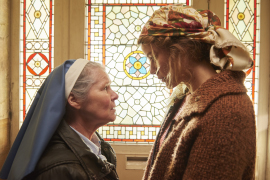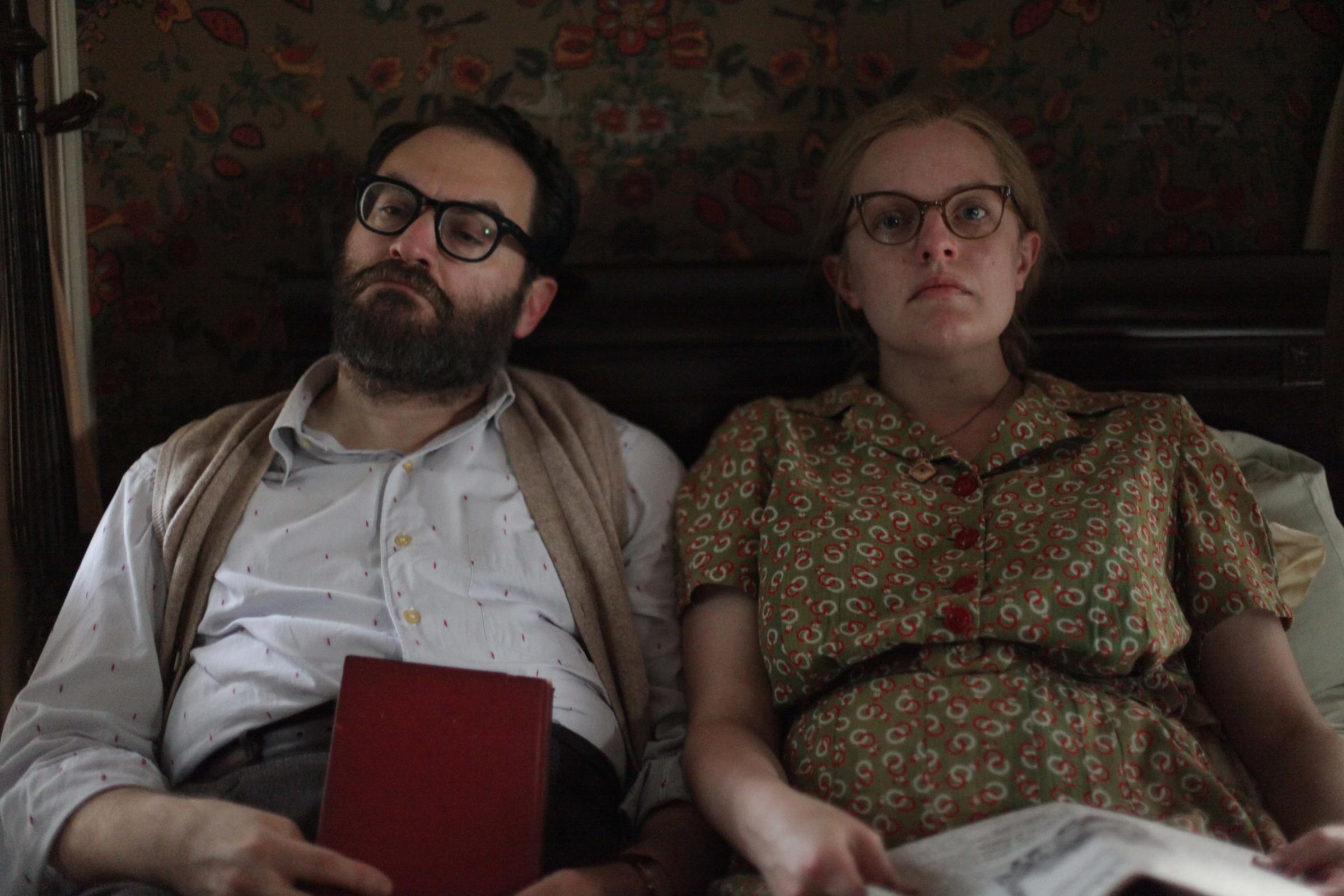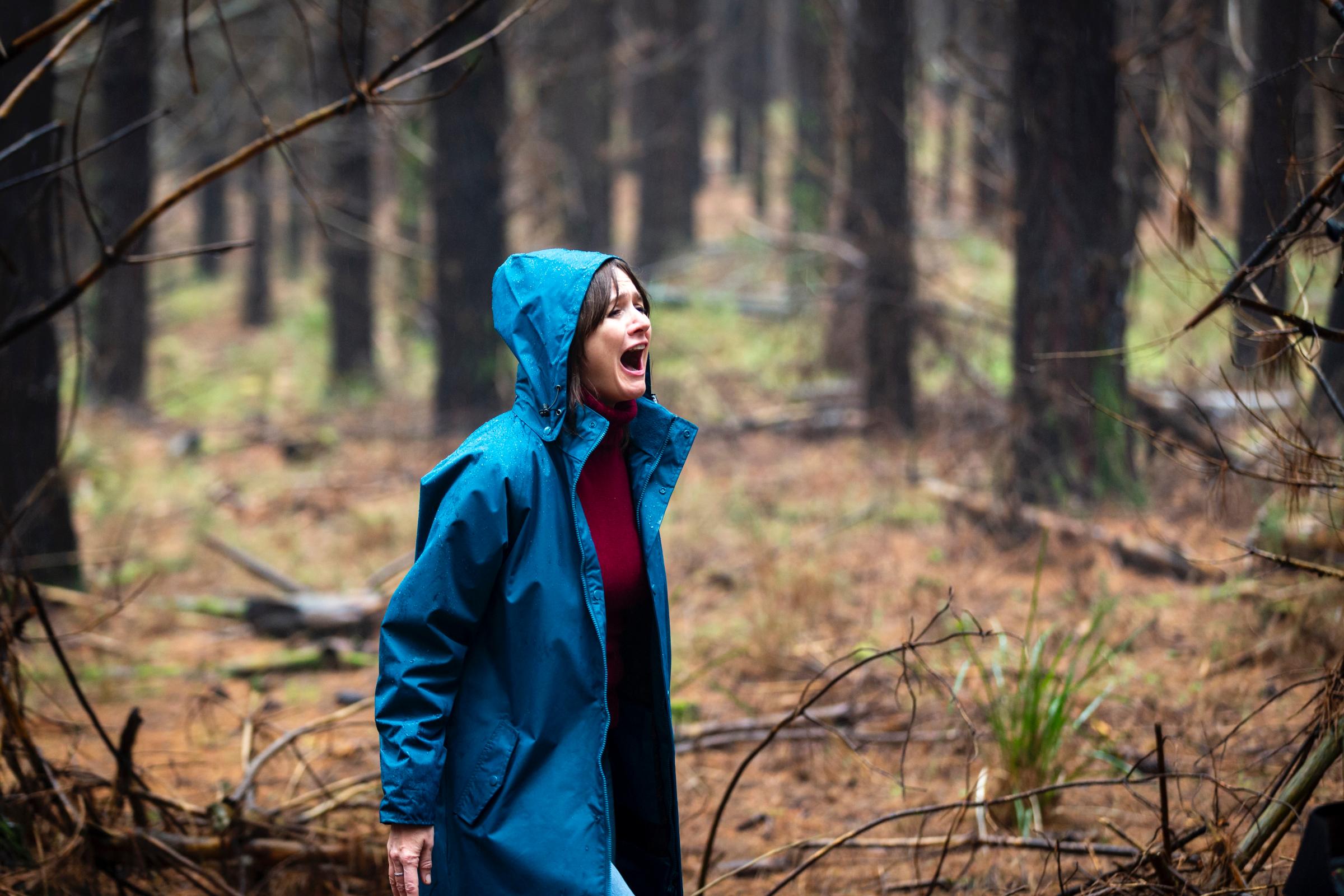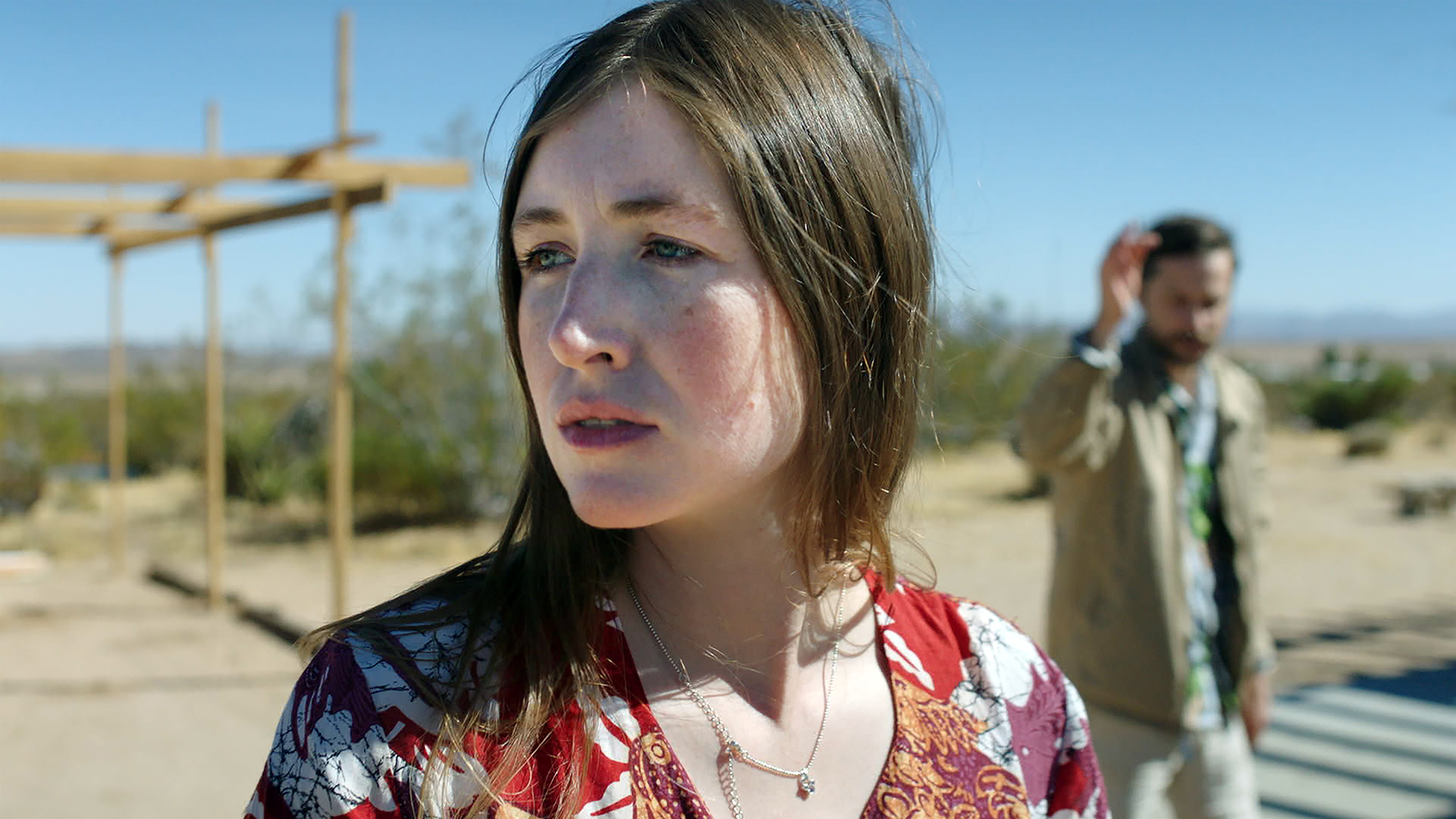Even if most horror movies, until fairly recently, have been made by men, women are still central to their impact and meaning. What would King Kong have been without his tiny captive inamorata Fay Wray, or Frankenstein without Elsa Lanchester, his bewigged, wild-eyed bride? Sometimes women represent fragility and innocence in horror movies, symbols of purity worth saving; other times they’re sympathetic companions or spokespeople for misunderstood monsters.
But their allure goes further and deeper than that—especially when it’s women who are doing the looking. Today, the term “the male gaze” is thrown around more loosely than its originator, filmmaker and film theorist Laura Mulvey, intended. Even when there’s a man behind the camera, the lens doesn’t always simply cater to man’s desires. Women love watching other women; we identify, we admire, and sometimes we feel a frisson (or more) of desire. Other times we recoil, though that may only intensify our fascination. So what happens when women filmmakers take control of the horror genre themselves?
Women filmmakers have been making horror movies since, well, the beginning of movies—Alice Guy-Blaché and Lois Weber contributed to the genre early on. But what’s notable now is the growing number of women filmmakers who are exploring expectations and anxieties specific to womanhood, as well as the mysteries of female erotic power. In the past two months alone we’ve seen a raft of horror movies made by women—Natalie Erika James’ Relic, Romola Garai’s Amulet, Josephine Decker’s Shirley and Amy Seimetz’s She Dies Tomorrow—that are keyed in to women’s experiences in canny, unnerving ways. To define all of these films as horror, in the classic sense of the word, is admittedly a slight stretch: some are more strictly psychological than supernatural, less studies of things that go bump in the night than maps of the turmoil in our heads. But even that is a reflection of what horror, seen through women’s eyes, can mean: the things that scare women the most are already inside them. For years, male filmmakers have been concocting outlandish scenarios for us, while we’ve been storing up material for centuries.

Horror movies made by women and specifically addressing women’s anxieties or hyperreal strengths aren’t new—Karyn Kusuma’s Jennifer’s Body (2009), Ana Lily Amirpour’s A Girl Walks Home Alone at Night (2014) and Jennifer Kent’s The Babadook (also 2014) are just three noteworthy examples from the past decade or so—though it’s still surprising there haven’t been more of them. No one could have foreseen that the summer of 2020, a mini-epoch during which many of us have been confined largely to our homes, unable to socialize in the usual ways and freer than usual to nurture our own personal neuroses, would provide the perfect soil and weather conditions for a new wave of horror movies made by women to flower so fully. Some of the current crop are more effective than others, but all share one trait: They’re about vulnerability but not necessarily victimization. Most of the women in these movies aren’t heroic in the superhero sense, but they’re also not the girl who needs to be saved.
Amulet, the directorial debut from actor Romola Garai (who also wrote the script), may be the most technically ambitious of these films, and through the first two-thirds, at least, it’s jaggedly compelling. An ex-soldier from Eastern Europe, Tomas (Alec Secareanu), has taken refuge in London, working odd jobs and sleeping in a flophouse. A nun with a seemingly generous spirit (Imelda Staunton) finds a place for him to live, in a decrepit house inhabited by a young woman, Magda (Carla Juri). Magda’s ailing mother is kept locked in an upstairs room—it’s dutiful Magda’s job to tend to her day and night, and the responsibility is wearing her down.
Garai layers the plot with so many feverish ideas and images that you wonder how, in the end, it’s going to come together. There’s a woman who can’t escape horrific memories of wartime rape. And Tomas, who seems to have fallen under the spell of a strange little goddess statue he’s dug out of the earth, needs to come to terms with his inflated view of himself as a protector of women, when his own interests are clearly all that matter. For him, the house itself appears to be a moist, sticky trap: It’s at first a place he doesn’t want to be, though it soon becomes one he can’t leave. Magda, meanwhile, appears to be the trapped innocent, the woman who needs saving; she’s also a fabulous cook—but what, exactly, is she serving up? Garai has some grim fun with notions of what men expect women to be vs. who they really are. The movie is marred by a confusing coda that only muddies its already too-vague ending, but it does feature one enduring image: a squirmy, newborn bat-looking thing that emerges from a womb with all its teeth. If that’s not a childbirth-anxiety metaphor, I’m not sure what is.
Sometimes the scariest things we give birth to aren’t, at least literally, living things. In Shirley, directed by Josephine Decker and based on a novel by Susan Scarff Merrell, Elisabeth Moss plays a fictionalized version of Shirley Jackson, the author of one of the most elegantly chilling ghost novels of the 20th century, The Haunting of Hillhouse, as well as the “The Lottery,” a whoppingly effective short story that was for years a nightmare-inducing staple of junior-high literature classes. In Shirley, Moss’ Jackson is the wife of a seemingly jovial Bennington academic (Michael Stuhlbarg) who actually exerts brutish control over her. He invites two young newlyweds, Rose and Fred (Odessa Young and Logan Lerman) to move into their comfortably ramshackle Vermont home, but really, he’s just looking for cheap labor: Shirley, neurotic almost to the point of being incapacitated, is incapable not just of keeping house but of performing basic tasks, like getting dressed for the day.

Shirley is controlling and manipulative in her own way, but she’s also deeply charismatic. She has a knowledge of witchcraft and folklore, and an affinity for the Tarot. But most of all, she’s blazingly intelligent, and Rose, who has had to put her own studies on hold with the birth of her first child, is drawn to her. Shirley’s lack of suitability for the real world—she’s treated as an oddity and a pariah by her husband’s university friends—means she lives in a world of her own, one in which she drinks too much and stays in bed too long, unable to move and, worse, unable to write. When she confronts a blank page, she’s really staring down a demon. She’s so difficult, in her husband’s eyes, that he’s taken up with the ostensibly more attractive wife of a fellow academic—so her sexual power has been diminished too. Shirley isn’t a horror movie in the conventional sense, but it’s a picture that stirs up the murk of so many women’s fears: If I can’t create something of worth, does that mean I too am worthless? If I have a child, what part of myself do I lose—and how do I ever get it back? This movie has a strange, heady earthiness, like an alluring perfume sourced from an enchanted, and somewhat treacherous, forest.
If the season’s most memorable horror movies have been made by women, that’s not to say men aren’t capable or interested in shaping horror scenarios from a woman’s point of view. In Leigh Wannell’s The Invisible Man, released in February, Moss played a woman stalked by the controlling boyfriend—cloaked by an invisibility suit—she’d thought dead. And Janelle Monáe stars in Gerard Bush and Christopher Renz’s upcoming Antebellum, playing a successful modern-day writer who suddenly finds herself living a very different life, in what looks like the pre-Civil War south. Never underestimate the power of the sympathetic imagination, and remember that women are free to explore the dimensions of men’s inner lives, too.
But even though men must feel just as much stress as women do when it comes to doing right by an elderly parent, I’m not sure a man could have made Relic. Emily Mortimer and Bella Heathcote play Kay and Sam, a mother and daughter who drive out to Kay’s mother’s house, way out in the country, when they learn that she hasn’t been seen for days. They let themselves in and poke around her things, tidying up and taking stock of all the placemarkers we use to track exactly where our parents are at as they age. There’s some shriveled fruit stacked in a bowl; little Post-It reminders (“Turn off the stove,” “Switch off the light”) abound, most of them exactly the sort of thing that a person whose memory is failing might write to herself. But among them is one that reads, “Don’t follow it”—a suggestion that she’s being stalked by something, as opposed to someone.
The next morning, Kay’s mother—and Sam’s grandmother—appears in the kitchen, as if she had never gone missing. But something is clearly wrong. Edna, played by Australian actor Robyn Nevin, is herself—yet not herself. One minute her eyes are dancing with warmth; the next they’ve gone cold, as if her own family members have suddenly become hostile strangers. She gives Sam, who’s always adored her, a ring, only to later angrily accuse her of stealing it. Kay, who’s filled with mostly unspecified guilt—does a daughter’s guilt ever have to be specified?—recognizes that she hasn’t been in touch with her mother as often as she should have been. She also thinks it’s time she found a safer place for Edna to live. She visits a nursing home, where the manager says with businesslike cheerfulness, “Think of it as independent living with the edges taken off.” It’s the most chilling line in the movie.

Director Natalie Erika James—who co-wrote the script with Christian White—uses horror-palette colors to explore tensions endemic to mothers and daughters, both between Edna and Kay and between Kay and Sam. Tempers flare over the smallest things; at one point or another, each of the three bristles when she senses another is telling her what to do. There’s nothing supernatural about any of that. But something is happening to Edna—she’s changing in ways that alarm Kay and Sam. Anyone who has watched a parent age—who has seen the number of selves one person can inhabit in a lifetime, moving from one stage to another in a gentle gradient spanning decades—will recognize Kay’s anguish. Relic’s ending is an embrace of terror and tenderness. So many horror filmmakers start out with great ideas and don’t know how to wrap them up. James caps off her debut feature with a quietly intense operatic flourish that feels earned.
If our imaginations are capable of conjuring great horrors as well as wonder, here’s a question: Can we pass our most acute fears, virus-style, on to others? In her shivery, evocative and sometimes surprisingly funny existential thriller She Dies Tomorrow, writer-director Amy Seimetz burrows deep into some of our dumbest 3 a.m. fears and wonders aloud, What if they’re not so dumb? Kate Lyn Sheil plays Amy, a young woman who, as she’s moving into the house she’s just bought, becomes seized with a fear she can’t explain: She’s certain she’s going to die the next day. In a panic, she calls her closest friend, Jane (Jane Adams), begging her to come over. When Jane finally shows up, she tries to talk sense into her friend—only to return home, get into her PJs, and suddenly feel paralyzed by the same fear. When Jane confesses her anxiety to others—to her brother (Chris Messina), to the doctor to whom she goes for treatment (Josh Lucas)—they too downplay her distress, only to find themselves captive to the same debilitating panic minutes later. The whole movie is like a game of telephone in which an urgent message is passed along from one player to another, fuzzy at first before emerging into disquieting clarity.

She Dies Tomorrow takes place in a world much like the one we’re living in right now, one that feels untrustworthy, not fully readable. It’s also a place where we might feel regret about some things we are capable of controlling: at one point, Amy tells a guy who appears to be a fairly new lover (Kentucker Audley) that she once ended a pregnancy. His face clouds over as she elaborates; the information seems to trouble him more than it does her, even though she’s the one who will carry the knowledge of the act forever. She notes that her life would be so different if she’d kept the child; she probably wouldn’t have been able to buy this house. Her practicality is the opposite of coldness—she knows the cost of her choice, because it lives inside her every day.
And what if it’s not the greater world but ourselves we can’t trust? Our certainty that we’ll have a tomorrow amounts not to everyday optimism but to a kind of arrogance—though we probably need that self-reassurance to survive. This is less a movie about death than one concerned with how we go through life without giving too much thought about its stopping, though that’s a certainty for all of us. Even when we think we’re thinking about death, we don’t really know what to think: No one trustworthy has yet returned from the other side to tell us what it’s all about. She Dies Tomorrow is all about the unreclaimable yesterday, the day before we knew. It’s a thoughtful movie with no jump scares; its jitters are baked all the way through.
Fear of death isn’t specific to women, obviously—the male characters in Seimetz’s movie are susceptible to it too. But maybe, given women’s often complex relationship with aging—which includes the fear of losing sexual allure—our fear of death has a slightly different tenor from the way men experience it. In Shirley, the aging, matronly protagonist is not only unable to write, which is her chief measure of her own self-worth; her husband has also taken up with a supposedly superior woman—and isn’t the moment we lose faith in our own magnetism itself a small death? Watching our parents age, as Kay does in Relic, is the ultimate reminder that we’re next; it’s also a test of our mettle when we see the traits that have calcified in our forebears begin to manifest themselves, in smaller ways, in us. In Amulet, the exhausted Magda has a different problem: she’s simply waiting for her mother to die, so she can be free. All of these movies were conceived and made before we had any sense of how a worldwide pandemic would shape and circumscribe our lives. But all, in some way, speak of constricted freedom, of carrying on with life until it decides it’s through with us. They’re about all the things we can’t protect ourselves from, what we used to call, in more innocent times, fear of the unknown. Now we know what to fear, only to realize that knowing isn’t necessarily better.
More Must-Reads from TIME
- Cybersecurity Experts Are Sounding the Alarm on DOGE
- Meet the 2025 Women of the Year
- The Harsh Truth About Disability Inclusion
- Why Do More Young Adults Have Cancer?
- Colman Domingo Leads With Radical Love
- How to Get Better at Doing Things Alone
- Michelle Zauner Stares Down the Darkness
Contact us at letters@time.com